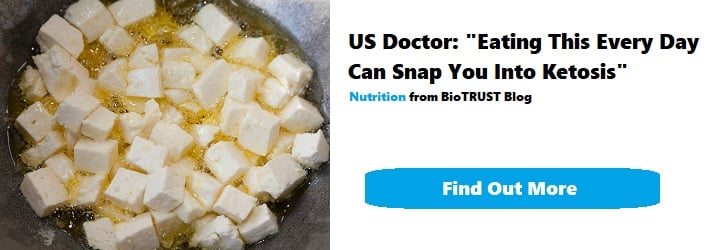6 Unexpected Health Benefits of Sauna Bathing

When you think about hitting the sauna, what images come to mind? Maybe you picture a group of sweaty older gentlemen sitting in a hot room reading the newspaper and shooting the breeze. Or you might close your eyes and think about that spa day you’ve been meaning to book for yourself.
Or, maybe visions of scantily-clad Finnish men and women are dancing through your head. After all, there are nearly as many saunas in Finland as there are people. And “sauna” is the only Finnish word that has a place in the everyday English language.
But guess what? Sauna bathing isn’t just for special occasions, and it isn’t reserved for select populations. In fact, when you learn about all the benefits of regularly using the sauna, I bet you’re going to be finding ways to make it a part of your routine. Just take a look at the shocking health benefits of sauna bathing.
Heart Health and Longevity
In a recent study published in JAMA Internal Medicine, Finnish researchers investigated the association of frequency and duration of sauna bathing with the risk of sudden cardiac death (SCD), fatal coronary heart disease (CHD), fatal cardiovascular disease CVD), and all-cause mortality (i.e., death from all causes) over the course of 20 years among a group of over 2,300 men from Eastern Finland.
The researchers found CVD was 27% lower for men who used the sauna 2 – 3 times per week. And it was 50% lower for men who used the sauna 4 – 7 times per week. That’s compared to men who only hit the sauna once a week. What’s more, they found all-cause mortality was 24% lower in the former group. And it was 40% lower in the latter group. That’s astonishing! In other words, sauna bathing appears to be extremely cardioprotective (with fewer deaths from heart attacks, strokes, and various heart-related conditions). And it boosts longevity.1
In addition, regular sauna bathing has been shown to reduce blood pressure, improve the function of blood and lymphatic vessels, and improve lipid profiles (e.g., cholesterol, triglycerides).2
Brain Health
In a separate study, the same Finnish researchers investigated whether frequency of sauna bathing was associated with the risk of memory-related issues. They looked at dementia and Alzheimer’s in the same group of Finnish men. Shockingly, men who used the sauna 4 – 7 times per week had a 56% lower risk for developing dementia or Alzheimer’s compared to men who used the sauna 2 – 3 times per week. The researchers concluded, “In this male population, moderate to high frequency sauna bathing was associated with lowered risks of dementia and Alzheimer’s disease.”
More research is needed to better understand the potential link between sauna bathing and memory-related conditions. Yet, this effect may be due to an increase in a compound called brain-derived neurotrophic factor (BDNF) in response to heat stress. BDNF is a very important growth factor that plays a key role in cognitive function, mood, and mental health.3 It protects existing brain cells, helps create new ones, improves neuroplasticity (the brain’s capacity to keep developing, changing, and healing itself), and enhances the ability to learn and master new tasks.
Mood Management
As mentioned, an increase in BDNF may also boost mood. On top of that, if you’ve ever sat in a sauna, then you may have experienced discomfort due to the heat stress. This is kind of like exercise. And along those lines, this precipitates a “runner’s high” due to a release of endorphins.
What’s more, researchers recently conducted a series of studies to examine the effect of heat therapy (hyperthermia), which raises body temperature similar to sauna bathing, on symptoms of depression. In the initial pilot study, the researchers found a single session of heat therapy reduced depression scores by almost 50% within five days.4
A much larger follow-up study echoed those striking results. The researchers found a single session of heat therapy produced a fast and powerful anti-depressant effect. One that lasted for up to six weeks after the treatment. They concluded that heat therapy “holds promise as a safe, rapid-acting, antidepressant modality with a prolonged therapeutic benefit.”5
Enhanced Endurance and Conditioning
During a sauna session, heart rate can increase up to 100 beats/minutes and reach up to 150 beats/minutes. In case you didn’t know, that’s fast! In fact, that’s similar to low- to moderate-intensity exercise. That’s not to say sauna bathing is a replacement for exercise. However, it does highlight the fact that the cardiovascular benefits seen with sauna bathing are quite similar to those adaptations to regular physical exercise.1
Even better, there’s evidence showing sauna bathing plus regular endurance training can lead to greater results than exercise alone. In a study in the Journal of Science and Medicine in Sport, researchers found that sitting in the sauna for 30 minutes after exercise led to a 32% improvement in time to exhaustion in male distance runners. This was most likely due to an increase in blood volume.6
Improved Insulin Sensitivity
One heavily touted benefit of regular exercise is improved insulin sensitivity. This plays an intricate role in determining how your body handles carbohydrates. Generally speaking, being more sensitive to insulin is a good thing—a really good thing.
On the other hand, poor insulin sensitivity is associated with a laundry list of health maladies. These include obesity, type 2 diabetes, cardiovascular disease, nerve and brain conditions, certain types of cancer, poor eye health and vision… Pretty much any negative health outcome you can imagine.
Guess what? Regular sauna use has the potential to improve insulin sensitivity by improving the health of the circulatory system in a way similar to aerobic exercise (i.e., increasing nitric oxide synthase).7
Body Composition Benefits
Hmmm, when the health benefits of sauna bathing are increased heart rate, mimicked exercise, and improved insulin sensitivity…do you get the feeling it may be helpful for weight management?
In the book Healthy Pleasures, Dr. Robert Ornstein and Dr. David Sobel state, “Sauna bathing may also be a pleasant adjunct to physical exercise for burning calories and conditioning the heart. Sweating is an active physiological response to help lower body temperature. It involves the expenditure of a considerable number of calories. A person can burn up to 300 to 800 calories during a sauna.”8
Among the explanations for how sauna bathing may work its magic is by activating compounds called heat shock proteins (HSPs). Indeed, research shows that heat stress triggers the release of HSP. This helps support a healthy metabolism, enhance immune function, and may play an important role in fat loss.9,10 For what it’s worth, one of the explanations for the many benefits associated with intense exercise is…you guessed…HSPs.
Crank up the Heat
As you can see, there are many potential health benefits of sauna bathing. They can be summed up simply: Sauna use increases longevity. How can you take advantage of these healthy aging benefits? Based on the current science, we can make some recommendations.
For starters, most of the research on sauna bathing has been collected in Finnish saunas. These are also known as “dry” saunas, and the temperature is around 174°F (or 79°C). That’s pretty toasty! Along those lines, we can’t necessarily extend these benefits to steam rooms, hot tubs, or infrared saunas.
To derive the most benefit, you need to sit in the sauna for about 20 minutes or longer at a time. And it seems like there’s a dose-dependent response, which means more frequent use (4 – 7 times per week) provides greater benefit. Having said that, the research also suggests that some is better than none.
Of course, even though a robust body of evidence suggests dry sauna bathing is safe, if you have any health issues or medical concerns, please consult with your physician prior to using the sauna.







